When students at Poudre School District’s Shepardson STEM Elementary School entered their classrooms at the start of the school year, little did they know they’d soon be working with community experts and partners to find solutions to real-world challenges.
For the three second grade classes, this meant examining how the Poudre River Public Library District could best meet the needs and interests of young learners through “kid-friendly library spaces” and presenting their small group research and library designs to a panel of experts ranging from librarians and architects to designers and community members.
“We were thrilled to be involved with Shepardson’s new problem-based learning program,” says Currie Meyer, Manager of Council Tree Library. “It’s clear after hearing the students’ presentations and looking at the creative designs that they were fully engaged in the process and excited about sharing what they learned with us.”
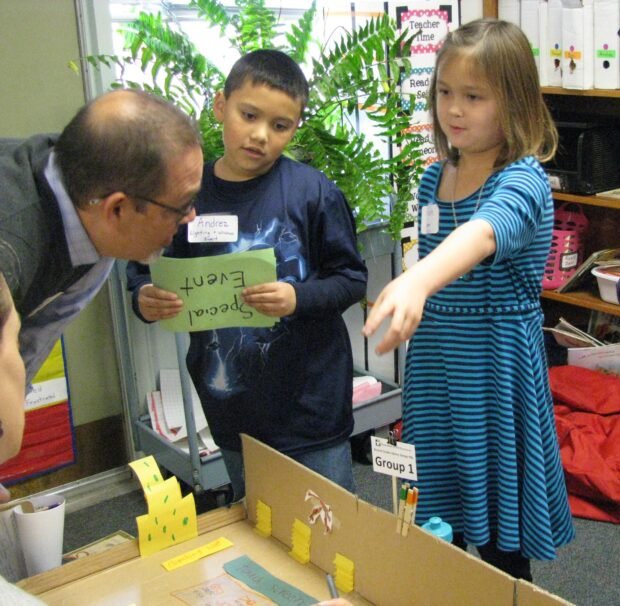
The student-centered problem-based learning (PBL) model that Shepardson teachers have implemented this year challenges students to solve authentic or real-world “problems” while developing and applying content knowledge from across subject areas.
“The PBL process is an excellent way to let students know that their ideas and thinking can contribute to society,” explains Becky Woodcox, STEM Coordinator and Media/Technology Manager at Shepardson. “Even a seven-year-old can contribute to solving the problems of today’s world and offer viable suggestions and solutions.”
During the project, 60 second graders and their three teachers met with guest experts and field experts to gain a better understanding of public libraries, the needs of young learners, design and architectural considerations, furniture and interior design, and much more. They visited Old Town Library for a personal tour and participated in a “virtual fieldtrip” to Council Tree Library using Google Hangouts.
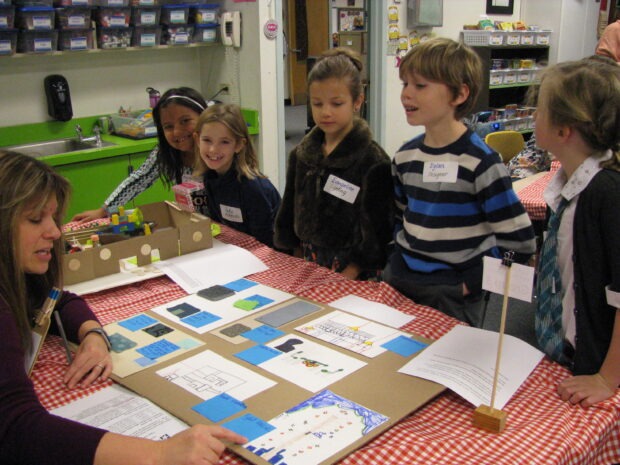
The Designs
On the day of the presentations, as the expert panelists made their way around the room and interacted with the small groups, it was easy to get caught up in how “cute” each of the kids were, dressed up in bow ties and dresses, many shaking hands with the adults and thanking them for coming. But, this was all quickly overshadowed by how thoughtfully and analytically each group approached their kid-friendly library space. And while there were some consistent elements in their designs, (like using solar and LED lights to save on energy costs), each group applied what they learned in new and exciting ways.
“We want kids to be interested in reading,” explained Ava, the “materials expert” in her group.
So the group focused on creating “cozy corners” and “safe and warm areas” for reading. They included small toddler shelves so kids could reach the books they wanted to read and decided on a central treehouse to draw attention to the children’s area. All of this, and more, was designed around an ocean theme and included materials and colors that would fit that design.
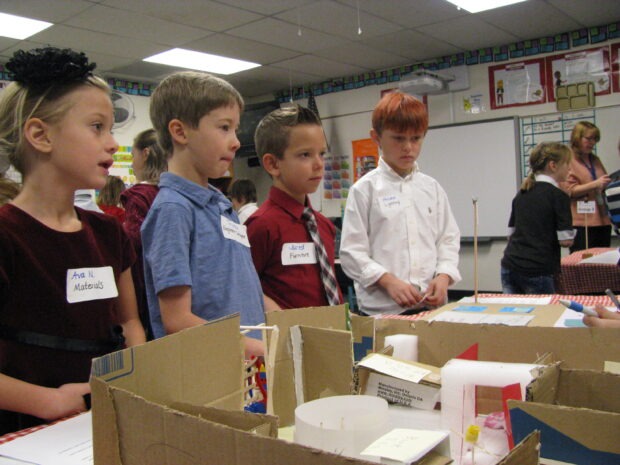
Each group’s members discussed and reasoned through all of their decisions before finalizing their library spaces. This meant they considered factors like use, noise, comfort, access, safety, technology, and eco-friendly materials.
Cole, a “kid architect”, pointed out that the layout of his group’s children’s area was determined mainly by its use and noise factors: the computers were placed away from the louder areas because “kids want it to be quiet when they use computers;” bathrooms were more centrally-located and included a family-friendly room; stroller parking needed to be in a large area near the storytime room and had to include washable paint on the walls because “moms sometimes bang the strollers into the wall and make marks.”
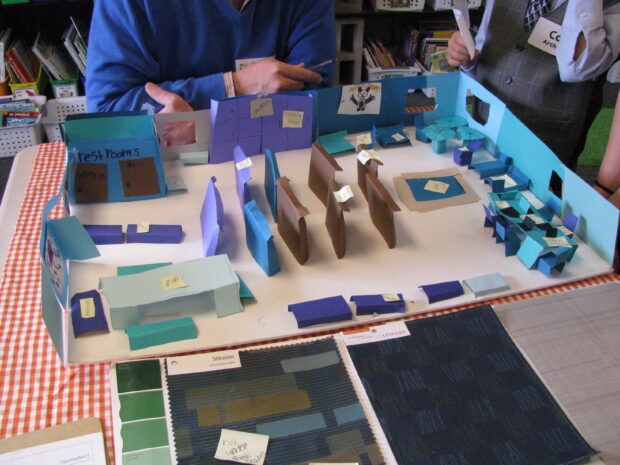
“One of the amazing things about the students’ presentations was how confident they were in sharing their designs and answering follow-up questions,” says Kristen Draper, Digital Literacy Librarian. “Sometimes I forgot I was talking with second graders.”
Some of the more unique ideas that groups envisioned for the children’s area of the library included:
- A treehouse with stairs and an elevator so “everyone can get to the top” to read books
- Waterproof furniture and shelves in case kids spill or “throw up on them”
- A costume box and small stage for performances
- Stained glass windows
- Two-sided mobile book shelves to hold more books and which can be moved to make room for events
- A dedicated makerspace area just for kids
- Bright yellow shelves because “kids don’t like drab colors”
- A climbing wall
- Wind turbines to generate power for the library
- Multi-purpose furniture
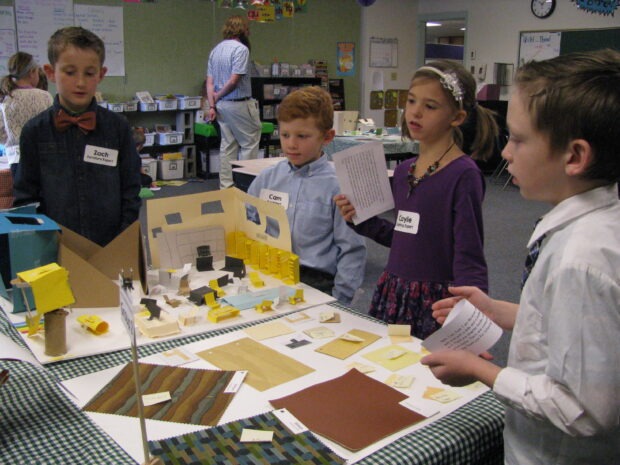
Problem-Based Learning Provides Relevance & Meets Academic Standards
“One of our objectives is to promote a path for post-secondary education and workforce readiness for our students,” Becky Woodcox explains. “And even though post-secondary education seems far off when you’re in the elementary school world, it’s critical to start students on this path as early as possible. We feel like PBL helps us set our students firmly on this path – we start giving them authentic experiences in Kindergarten!”
In addition to traditional subject area requirements, the second grade Colorado Academic Standards includes focusing on community connections and active involvement. The library design project a perfect connection to this requirement and also allowed teachers to incorporate reading and writing standards, and math standards in the form of scale model designs and measuring, identifying, and using 3D shapes.
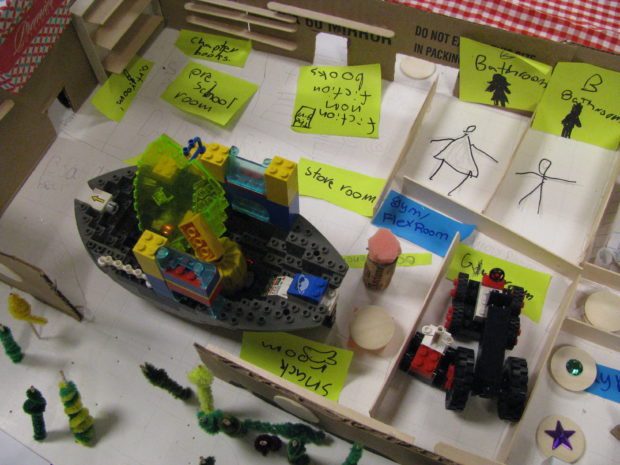
Fortunately, the community-focus also enabled the second graders to present their learning to community members and field experts who would be most likely to use their information and recommendations in the future: librarians, library architects, and designers.
“When students are working together to solve these authentic problems, engaged in working not just with their peers and teachers but also with people throughout our community, they begin to make the connections between what they are learning and why that material is important to know,” explains Wayne Thornes, Assistant Principal at Shepardson STEM Elementary School.

The long standing partnership between Poudre River Public Library District and Shepardson STEM Elementary School extends beyond the second grade PBL project. It includes book sharing, dramatic oral story telling programs, promoting the annual One Book 4 Colorado, and much more.
“Partnering with community organizations like Poudre River Libraries is invaluable,” says Becky Woodcox. “We hope the community will gain respect for what is going on in elementary education and will be enthused to volunteer and partner with us.”
See more photos:

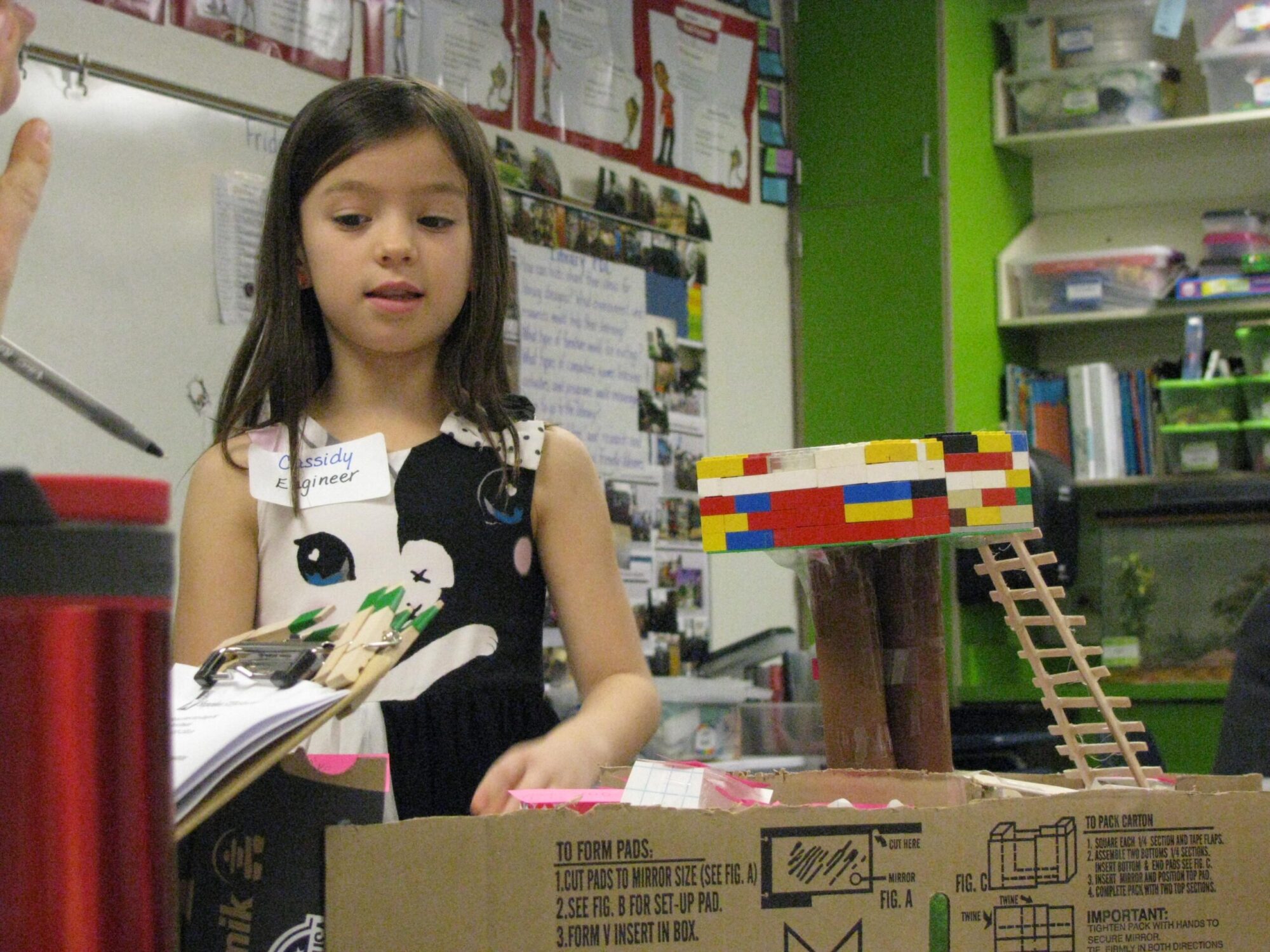
Thanks to the Poudre River Public Library District for becoming a meaningful partner with an elementary school! Shepardson students are learning how to be actively engaged with community partners to help solve their challenges. You are to be commended for your willingness to be a source for young students to learn and use these 21st. century skills in profound ways. Such real life experiences communicate clearly that they can indeed make our community and our world a better place!
Kudos to you for embracing this unique opportunity to help our youngest learners become active problem solvers! May more community partners follow your lead and realize the multiple values of this empowering experience with our next generation of leaders!
Thank you Mary Kay! We love working with our community partners and the Shepardson PBL project was an innovative and powerful collaboration. The staff, teachers, and students we got to work with were simply amazing.